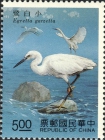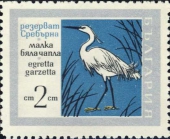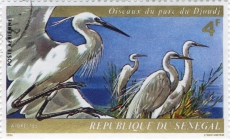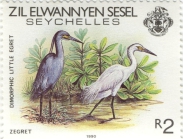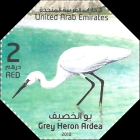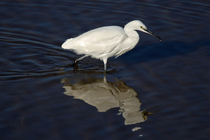Scheldt species taxon details
Egretta garzetta (Linnaeus, 1766)
159115 (urn:lsid:marinespecies.org:taxname:159115)
accepted
Species
marine, fresh, terrestrial
Not documented
Scheldt species (2025). Egretta garzetta (Linnaeus, 1766). Accessed at: https://scheldemonitor.org/speciesregister/aphia.php?p=taxdetails&id=159115 on 2025-09-12
VLIZ Consortium. Scheldt Species Register. Egretta garzetta (Linnaeus, 1766). Accessed at: https://scheldemonitor.nl/speciesregister/aphia.php?p=taxdetails&id=159115 on 2025-09-12
Date
action
by
context source (HKRMS)
Blackmore, G. (1998). The importance of feeding ecology in investigating accumulated heavy metal body burdens in Thais clavigera (Kuster) (mollusca: neogastropoda: muricidae) in Hong Kong. <em>PhD thesis. The University of Hong Kong.</em> [details]
context source (RAS) Australian Antarctic Data Centre. , available online at https://data.aad.gov.au/aadc/biodiversity/ [details]
context source (Schelde) Maris, T., O. Beauchard, S. Van Damme, E. Van den Bergh, S. Wijnhoven & P. Meire. (2013). Referentiematrices en Ecotoopoppervlaktes Annex bij de Evaluatiemethodiek Schelde-estuarium Studie naar “Ecotoopoppervlaktes en intactness index”. [Reference matrices and Ecotope areas Annex to the Evaluation methodology Scheldt estuary Study on “Ecotope areas and intactness index”. <em>Monitor Taskforce Publication Series, 2013-01. NIOZ: Yerseke.</em> 35 pp. (look up in IMIS) [details]
context source (Bermuda) Dobson, A. F. (2002). A Birdwatching Guide to Bermuda. Arlequin Press, Chelmsford, Essex, 173 pp. [details]
basis of record Integrated Taxonomic Information System (ITIS). , available online at http://www.itis.gov [details]
additional source Banks, R.C., R.W. McDiarmid, and A.L. Gardner. 1987. Checklist of vertebrates of the United States, the U.S. Territories, and Canada. U.S. Fish and Wildlife Service Resource Publication No. 166. 79 p. [details]
additional source Peterson, R.T.; Peterson, V.M. (2002). A field guide to the birds of eastern and central North America. <em>Fifth Edition.</em> Peterson Field Guide Series. Houghton Mifflin Company. New York. 427 p. [details]
additional source Brown, L.H., E.K. Urban & K. Newman. (1982). The Birds of Africa, Volume I. <em>Academic Press, London.</em> [details]
additional source Muller, Y. (2004). Faune et flore du littoral du Nord, du Pas-de-Calais et de la Belgique: inventaire. [Coastal fauna and flora of the Nord, Pas-de-Calais and Belgium: inventory]. <em>Commission Régionale de Biologie Région Nord Pas-de-Calais: France.</em> 307 pp., available online at http://www.vliz.be/imisdocs/publications/145561.pdf [details]
additional source King, C.M.; Roberts, C.D.; Bell, B.D.; Fordyce, R.E.; Nicoll, R.S.; Worthy, T.H.; Paulin, C.D.; Hitchmough, R.A.; Keyes, I.W.; Baker, A.N.; Stewart, A.L.; Hiller, N.; McDowall, R.M.; Holdaway, R.N.; McPhee, R.P.; Schwarzhans, W.W.; Tennyson, A.J.D.; Rust, S.; Macadie, I. (2009). Phylum Chordata: lancelets, fishes, amphibians, reptiles, birds, mammals. <em>in: Gordon, D.P. (Ed.) (2009). New Zealand inventory of biodiversity: 1. Kingdom Animalia: Radiata, Lophotrochozoa, Deuterostomia.</em> pp. 431-554. [details]
additional source Liu, J.Y. [Ruiyu] (ed.). (2008). Checklist of marine biota of China seas. <em>China Science Press.</em> 1267 pp. (look up in IMIS) [details] Available for editors
context source (RAS) Australian Antarctic Data Centre. , available online at https://data.aad.gov.au/aadc/biodiversity/ [details]
context source (Schelde) Maris, T., O. Beauchard, S. Van Damme, E. Van den Bergh, S. Wijnhoven & P. Meire. (2013). Referentiematrices en Ecotoopoppervlaktes Annex bij de Evaluatiemethodiek Schelde-estuarium Studie naar “Ecotoopoppervlaktes en intactness index”. [Reference matrices and Ecotope areas Annex to the Evaluation methodology Scheldt estuary Study on “Ecotope areas and intactness index”. <em>Monitor Taskforce Publication Series, 2013-01. NIOZ: Yerseke.</em> 35 pp. (look up in IMIS) [details]
context source (Bermuda) Dobson, A. F. (2002). A Birdwatching Guide to Bermuda. Arlequin Press, Chelmsford, Essex, 173 pp. [details]
basis of record Integrated Taxonomic Information System (ITIS). , available online at http://www.itis.gov [details]
additional source Banks, R.C., R.W. McDiarmid, and A.L. Gardner. 1987. Checklist of vertebrates of the United States, the U.S. Territories, and Canada. U.S. Fish and Wildlife Service Resource Publication No. 166. 79 p. [details]
additional source Peterson, R.T.; Peterson, V.M. (2002). A field guide to the birds of eastern and central North America. <em>Fifth Edition.</em> Peterson Field Guide Series. Houghton Mifflin Company. New York. 427 p. [details]
additional source Brown, L.H., E.K. Urban & K. Newman. (1982). The Birds of Africa, Volume I. <em>Academic Press, London.</em> [details]
additional source Muller, Y. (2004). Faune et flore du littoral du Nord, du Pas-de-Calais et de la Belgique: inventaire. [Coastal fauna and flora of the Nord, Pas-de-Calais and Belgium: inventory]. <em>Commission Régionale de Biologie Région Nord Pas-de-Calais: France.</em> 307 pp., available online at http://www.vliz.be/imisdocs/publications/145561.pdf [details]
additional source King, C.M.; Roberts, C.D.; Bell, B.D.; Fordyce, R.E.; Nicoll, R.S.; Worthy, T.H.; Paulin, C.D.; Hitchmough, R.A.; Keyes, I.W.; Baker, A.N.; Stewart, A.L.; Hiller, N.; McDowall, R.M.; Holdaway, R.N.; McPhee, R.P.; Schwarzhans, W.W.; Tennyson, A.J.D.; Rust, S.; Macadie, I. (2009). Phylum Chordata: lancelets, fishes, amphibians, reptiles, birds, mammals. <em>in: Gordon, D.P. (Ed.) (2009). New Zealand inventory of biodiversity: 1. Kingdom Animalia: Radiata, Lophotrochozoa, Deuterostomia.</em> pp. 431-554. [details]
additional source Liu, J.Y. [Ruiyu] (ed.). (2008). Checklist of marine biota of China seas. <em>China Science Press.</em> 1267 pp. (look up in IMIS) [details] Available for editors
 Present
Present  Inaccurate
Inaccurate  Introduced: alien
Introduced: alien  Containing type locality
Containing type locality
To Barcode of Life (15 barcodes)
To Biodiversity Heritage Library (252 publications)
To Biological Information System for Marine Life (BISMaL)
To European Nucleotide Archive, ENA (Egretta garzetta)
To GenBank (140317 nucleotides; 38413 proteins)
To Global Biotic Interactions (GloBI)
To IUCN Red List (Least Concern)
To PESI
To ITIS
To Biodiversity Heritage Library (252 publications)
To Biological Information System for Marine Life (BISMaL)
To European Nucleotide Archive, ENA (Egretta garzetta)
To GenBank (140317 nucleotides; 38413 proteins)
To Global Biotic Interactions (GloBI)
To IUCN Red List (Least Concern)
To PESI
To ITIS


